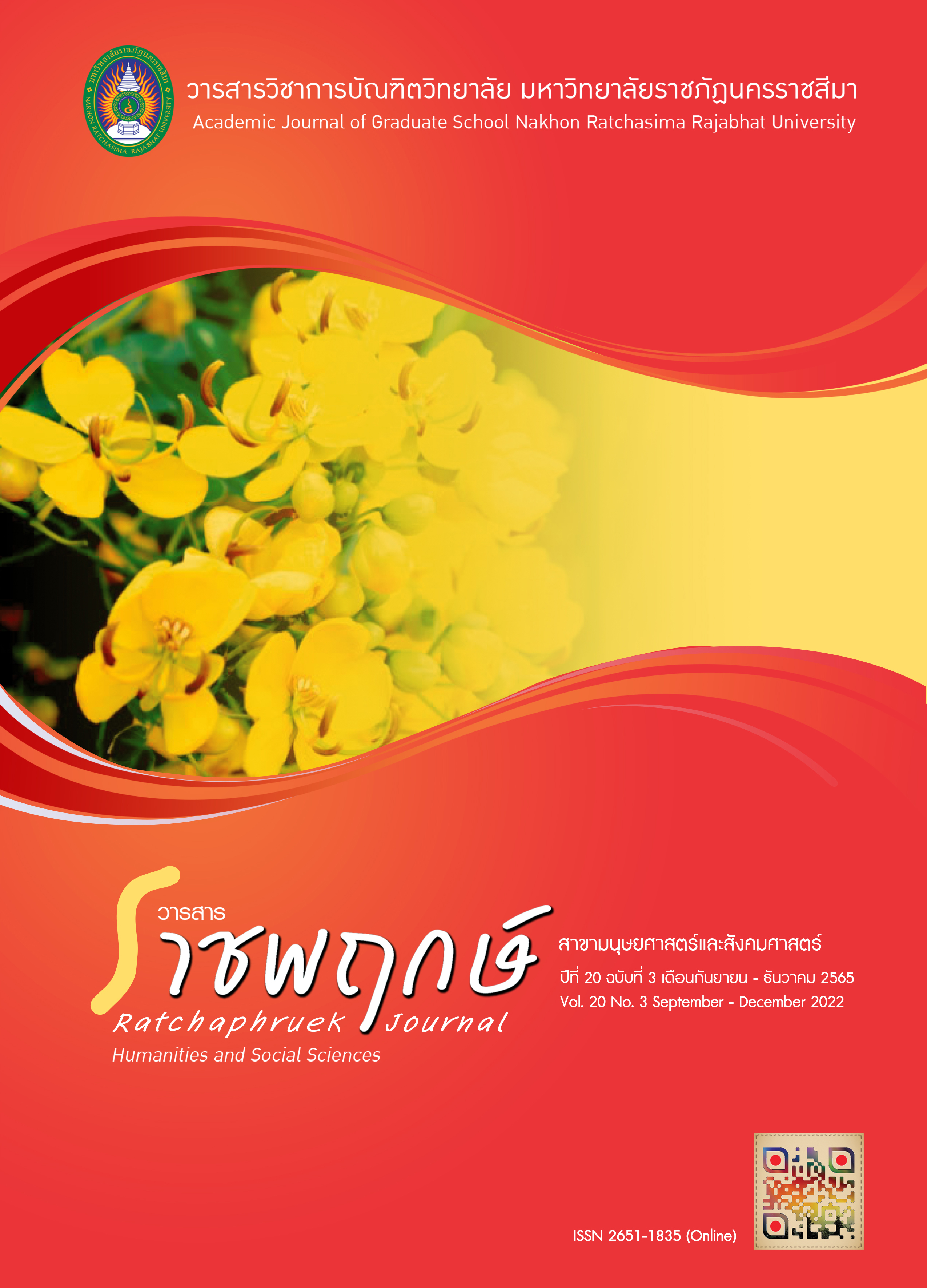Bystanders and Prevention of Bullying in Schools
Main Article Content
Abstract
The purpose of this qualitative research was to analyze the perspectives of bystanders to develop a process for preventing bullying. The researcher used in-depth interview methods and analyzed the data by assigning codes to the data and grouping the data into groups based on the subject to be studied. The informants were divided into two groups. Group one was 5 class teachers or subject teachers who teach in upper elementary school aged between 31 to 43 years old with 3 to 22 years of work experience. Group two was 4 upper elementary school students between 9 to 11 years old who had witnessed incidents of bullying in school.
The results indicated a process to prevent bullying in school consisting of 1) observing the situation to analyze events, 2) assessing the bullying situation, 3) taking action in helping friends, and, 4) taking action to protect friends. Moreover, the research found the conditions supporting prevention are self-awareness, social awareness, relationship skills, and responsibility to decide. Teachers can help pupils learn or encourage development that is age-appropriate, develop their individuality, and establish a sense of self. The findings of this study can be used to establish guidelines for protecting kids from bullying in the classroom, assisting affected students, and creating a program to address bullying.
Article Details

This work is licensed under a Creative Commons Attribution-NonCommercial-NoDerivatives 4.0 International License.
References
ชาย โพธิสิตา. (2556). ศาสตร์และศิลป์แห่งการวิจัยเชิงคุณภาพ (พิมพ์ครั้งที่ 6). กรุงเทพฯ: ศูนย์หนังสือจุฬาลงกรณ์มหาวิทยาลัย.
พัชราภรณ์ ศรีสวัสดิ์, วิไลลักษณ์ ลังกา, กัมปนาท บริบูรณ์ และครรชิต แสนอุบล. (2561). การพัฒนารูปแบบการป้องกันการข่มเหงรังแกในโรงเรียน. มนุษยศาสตร์ สังคมศาสตร์และศิลปะ, 1(11), น. 3653-3667.
ภัชชา ธำรงอาจริยกุล. (2562). ความรับผิดทางละเมิดและการเยียวยาความเสียหาย กรณีการกลั่นแกล้งในเด็ก. วารสารบัณฑิตศึกษานิติศาสตร์, 12(4), น. 683-706.
ศรีเรือน แก้วกังวาล. (2553). จิตวิทยาพัฒนาการชีวิตทุกช่วงวัย เล่ม 1 แนวคิดเชิงทฤษฎี-วัยเด็ก ตอนกลาง (พิมพ์ครั้งที่ 9). กรุงเทพฯ: มหาวิทยาลัยธรรมศาสตร์.
สมบัติ ตาปัญญา. (2563). รายงานผลการวิเคราะห์ข้อมูลการสำรวจการรังแกกันในโรงเรียน "นักเรียนก้าวทันยุติการรังแกในโรงเรียนและโซเชียลมีเดีย" (รายงานการวิจัย). กรุงเทพฯ: มูลนิธิรักษ์ไทย และสำนักงานคณะกรรมการการศึกษาขั้นพื้นฐาน.
สุธีรา บุนนาค และภัทรพร แจ่มใส. (2564). การกลั่นแกล้งทางวาจาในนักเรียนประถมศึกษาตอนปลาย (รายงานการวิจัย). กรุงเทพฯ: สถาบันวิจัยและพัฒนาแห่งมหาวิทยาลัยเกษตรศาสตร์.
Knauf, R.-K., Eschenbeck, H., & Hock, M. (2018). Bystanders of bullying: Social-cognitive and affective reactions to school bullying and cyberbullying. Cyberpsychology: Journal of Psychosocial Research on Cyberspace, 12(4). pp. 1-17.
Mazzone, A. (2020). Bystanders to Bullying: An Introduction to the Special Issue. International Journal of Bullying Prevention, 2(1), pp. 1-5.
Midgett, A., Doumas, D. M., Peralta, C., Bond, L. & Flay, B. (2020). Impact of a Brief, Bystander Bullying Prevention Program on Depressive Symptoms and Passive Suicidal Ideation: A Program Evaluation Model for School Personnel. Journal of Prevention and Health Promotion, 1(1), pp. 80-103.
Xie, H., & Ngai, S. S.-y. (2020). Participant roles of peer bystanders in school bullying situations: Evidence from Wuhan, China. Children and Youth Services Review, 110, pp. 1-10.


